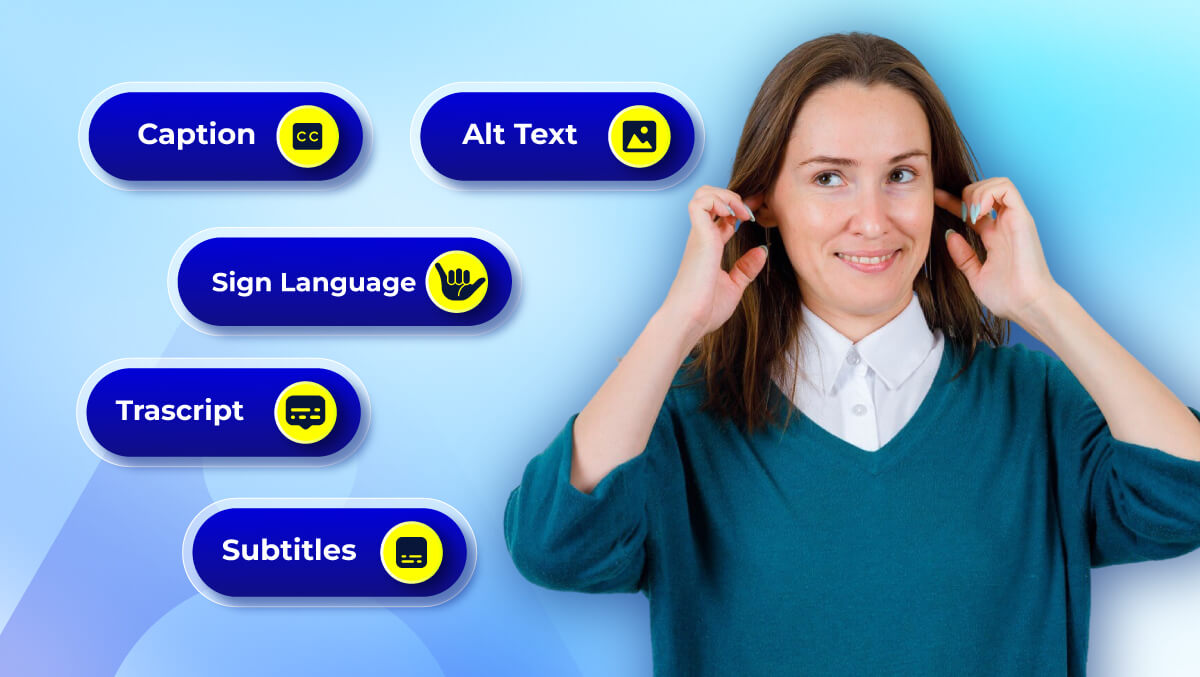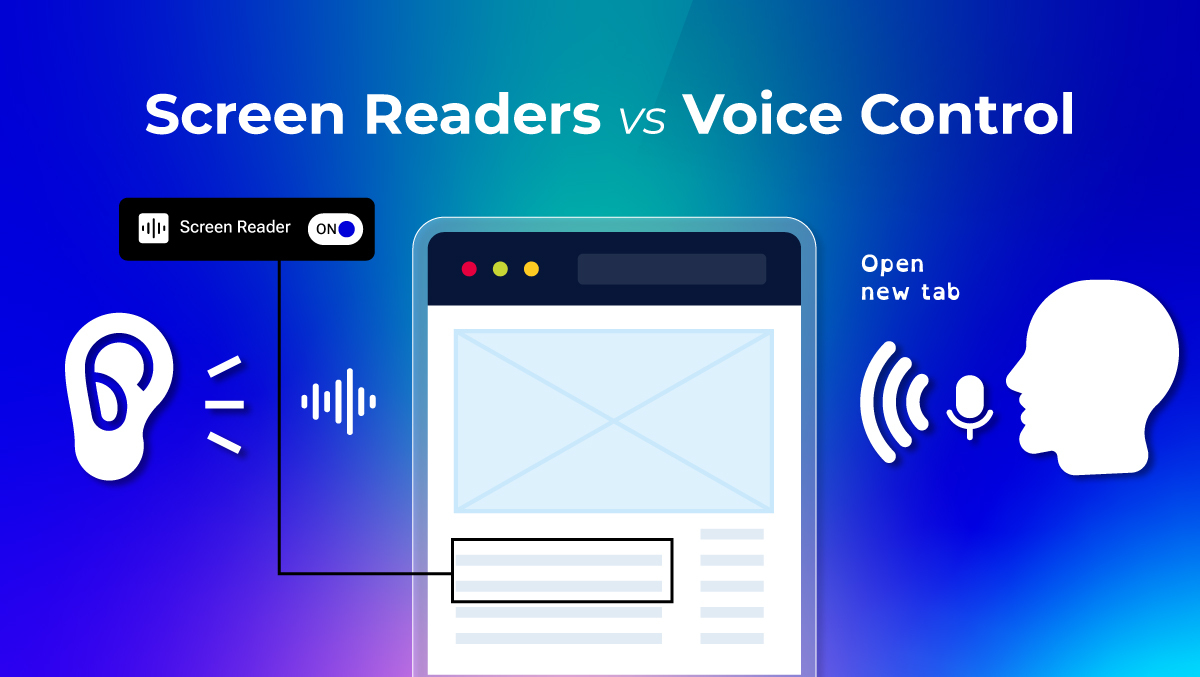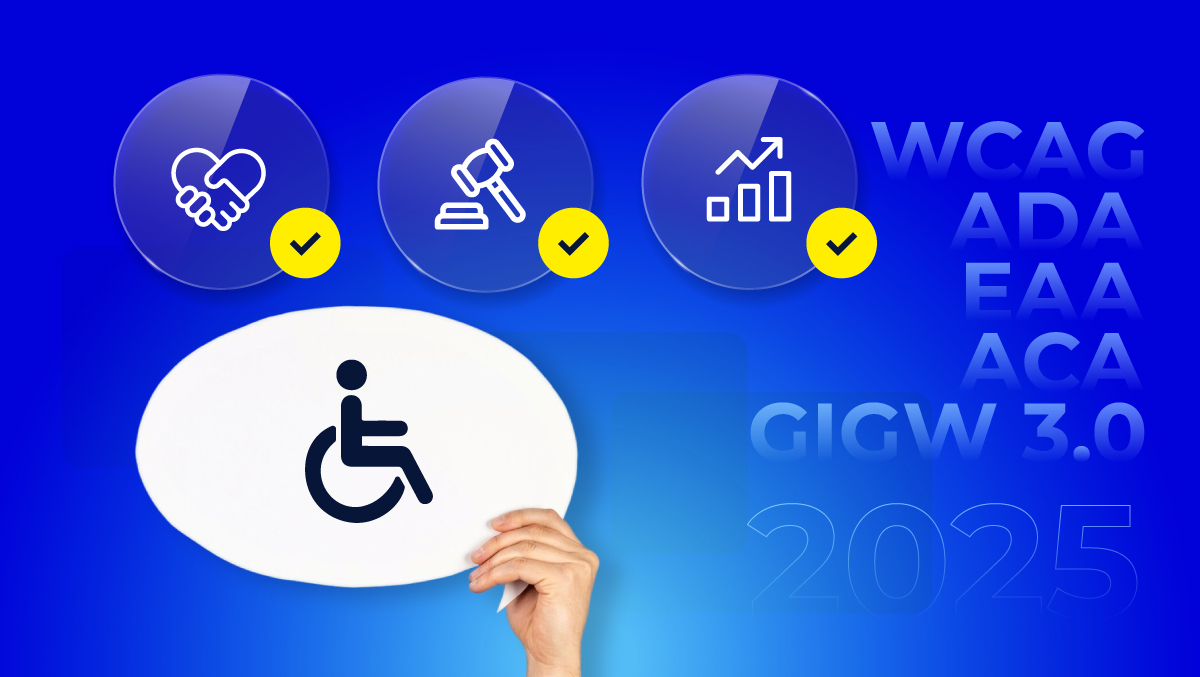How to Run an Accessibility Audit on Your Website
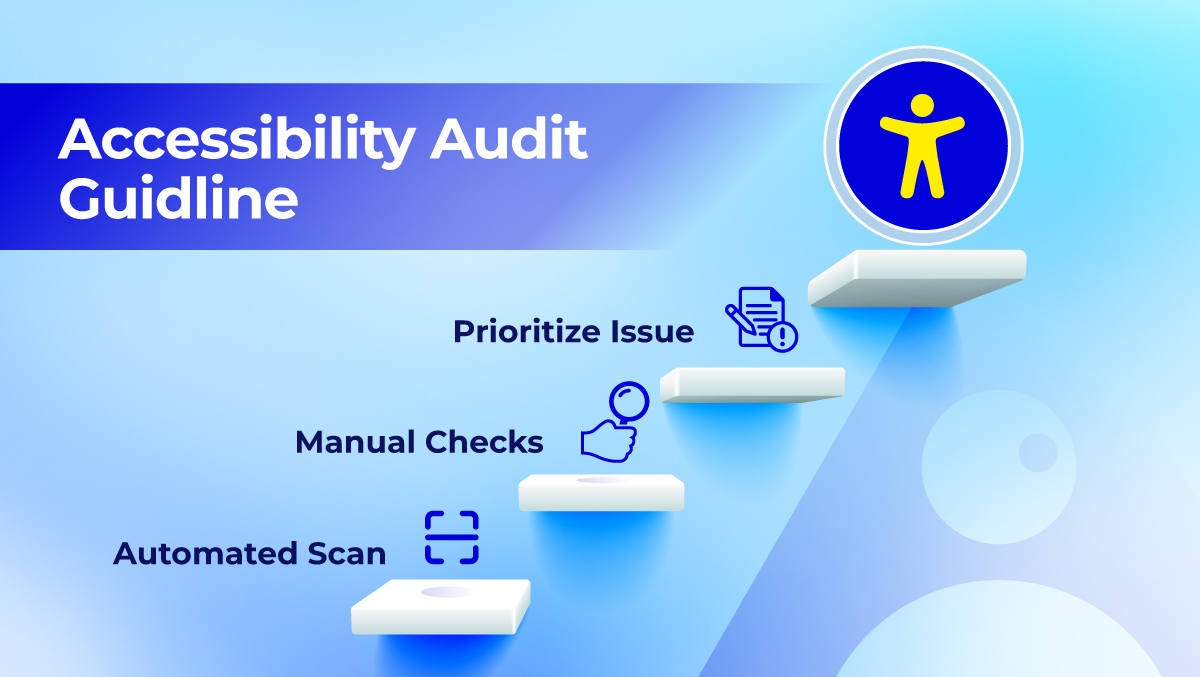
A recent study of over 63,000 websites reported that only around 4% of sites are fully compliant with accessibility standards, which means that the other 96% have some detectable issues that could be troublesome to disabled users.
An analysis of the top one million homepages produced a similar result: 95.9% of the sites failed automated WCAG 2 checks, but there is no indication that the issue is dwindling.
These failures are not unique or obscure. Many times, they are simply oversights like missing alt text, color contrasts that are unreadable, or forms that are not device independent (i.e., cannot be used with a mouse).
It is not the fact that these oversights exist that is troublesome. It is the fact that little barriers create dead ends for visits.
An accessibility audit is the process of finding and removing these barriers. An audit should not be simply a compliance checklist with some acronym like WCAG, ADA, or Section 508, while it could also serve that function as well; it is ensuring that your site can actually welcome every visitor to your site.
What Is a Website Accessibility Audit?
A website accessibility audit is a systematic assessment of your website to determine if barriers exist that may prevent people with disabilities from being able to use your website.
Think of it as a health check for your digital platform. You test out performance, security, etc. It's important to test whether everyone can get through your site and understand it.
The core function of an accessibility audit is to help you understand how closely your site meets standards such as the WCAG, the ADA, and Section 508 (for U.S. federal agencies and contractors).
These standards are designed to ensure that various assistive technologies work with a website, such as screen readers, magnifiers, and voice controls.
Why is an accessibility audit important?
Accessibility is more than just compliance; it is about providing a digital platform that anyone can use, regardless of whether they can use it in the same way.
For example:
- A person using a keyboard only should be able to navigate through forms and not get stuck.
- A person using a screen reader should be able to hear meaningful labels to images and buttons and descriptions of visual information.
- Text should still be legible when enlarged or viewed in high contrast.
An accessibility audit assesses whether your site is really usable by the millions of people who may approach your website in an alternative way.
Preparing for an Accessibility Audit
It is a good idea to prepare before scanning or testing pages. Having a plan allows you to have a more focused audit and spend the time where it matters most. Here are three important steps to prepare:
1. Find the Right Accessibility Standard
Standards and laws for accessibility differ depending on where you operate and who is in your audience. The industry standard is the Web Content Accessibility Guidelines (WCAG).
Most organizations strive to be WCAG 2.1 Level AA compliant, as it provides a broad range of requirements, without being too strict.
In the U.S., you may need to abide by the Americans with Disabilities Act (ADA) and Section 508, which applies specifically to federal agencies and contractors.
If you have customers in different regions, you will want to check to see what standards apply to your location and what industry you are in. Starting with WCAG provides a good baseline for all of them.
2. Establish the Focus of Your Accessibility Testing
Because websites and apps can be so large, it's simply impractical to test every page in detail. Instead, it is better to focus on the areas that matter most to users. Generally speaking, the following areas are important:
- Homepages (the first impression).
- Key user journeys (product pages, checkout, sign-up forms, dashboards).
- Supporting content (PDFs, videos, mobile apps, if applicable).
By focusing your audit on key pages and journeys, you will ensure the audit raises barriers that directly impact users trying to engage in your services.
3. Allocate Resources and Choose Type of Audit
Not every organization has the same time, budget, or internal expertise. That is why it is critical to determine how deep your audit will be upfront:
- Complete audits look at everything in detail, but will take more time and resources.
- Risk-based audits can look at only the materiality paths to move faster.
- Hybrid audits combine both approaches for a balanced effort.
Accessibility Testing Methods
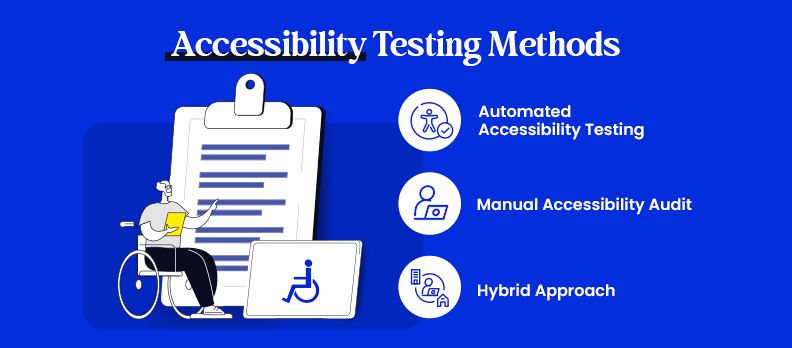
After defining your scope and standards, the next step is to determine how you will test your site. Because no one method will cover everything, most accessibility audits will use some combination of approaches.
1. Automated Accessibility Testing
Automated tools are great for a quick overview. They can scan many components of your website and highlight some common issues like:
- Missing alternative text on images.
- Not enough contrast between text and background colors.
- Links or buttons with no labels.
Automated testing will help save time and catch some of the easy to find issues. They cover a maximum of about 20-30% of accessibility issues, so you will still need to do some human reviewing to get a full picture.
2. Manual Accessibility Audit and Expert Review
Manual testing covers some of the areas that are missing from automated checking. Human reviewers can identify issues that software often cannot, such as:
- Keyboard focus order is confusing or illogical.
- The forms do not have clear instructions or error messages.
- Headings do not have a clear structure.
- Elements are technically coded, but not useful in practice.
Experts sometimes test with assistive technologies like screen readers (NVDA, JAWS, VoiceOver) or voice navigation tools so that they can evaluate how users are actually experiencing the website.
3. Hybrid Approach: Automation and Human Audit
The best audits blended both of these approaches. Automated scans can offer speed and breadth, while manual reviews lend you depth and context. Together, you can discover not just the "checklist" failures, but also real barriers that might prevent someone from completing the task at hand on your site.
With a balance of methodologies, you will have reliable and pertinent audit findings. You will also have a better focus on remediation, determining fixes that may be easier and faster or fixes that require more in-depth design or development.
Accesstive’s Tools for Accessibility Audits
Accesstive gives organizations a comprehensive way to locate, track, and remediate accessibility issues in an effective way. Below is a brief overview of how their tools support an audit process:
Live Audit
Accesstive provides live scans of your website, and is able to identify accessibility issues and impact weightings; immediately. This way, teams can quickly see where the biggest accessibility problems are, which in turn informs their next actions.
One-Click Fixes + AI Assistant
The tools also incorporate suggested actions and AI-powered suggestions to remediate common accessibility problems. The "quick wins" help you to remediate issues without waiting for you to build something new or rebuild/replace what you were previously using..
Ongoing tracking and reports
Accessibility compliance is not a one-and-done fix; that's the risk. Finding and tracking issues takes effort and vigilance.
Accesstive builds with continuous monitoring and reporting, so you can monitor actions and progress over time, while also monitoring ongoing compliance and new issues as they arise.
Best Use Case
Accesstive's tools are helpful for quick discovery and reasonably fast remediation, but they provide the best utility when you engage in manual testing in conjunction.
Automated guidance contributes to the speed of fix, but manual review ensures that you understand the real-world needs for accessibility within your life cycle/monthly period.
They have a Free Accessibility Audit available to try out to see how your site is doing.
How to Conduct an Accessibility Audit: Step-by-Step
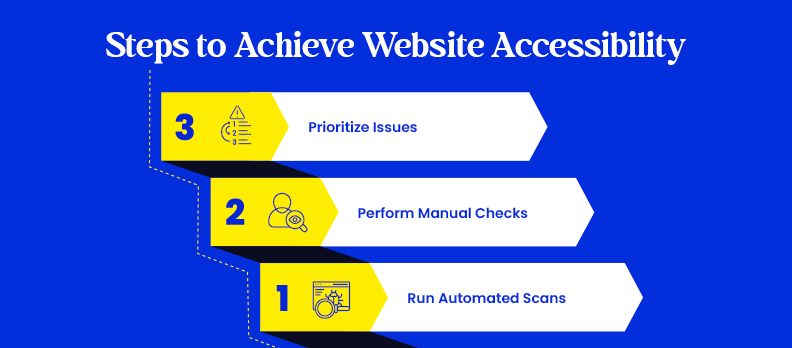
With a plan in place and your tools selected, it is now time to get to the audit itself. An organized approach will help ensure that you don’t miss critical elements of accessibility in the audit process, so try to follow some type of process.
Here is a simple process you can follow.
1. Run Automated Accessibility Scans
To begin with, run all the automated tools to scan your site and issue reports. This provides an introductory view of common accessibility problems like missing descriptions on images, contrast of text, links with no labels, etc.
Using automated scans helps automate the process of getting across many pages all at once, and it gives you an opportunity to fix issues flagged by the automated tools.
2. Perform Manual Accessibility Checks
Automation has its limits; the manual tests are the ones that lead to finding the problems that directly impact real people. A manual test always includes specific key checks, including:
- Keyboard Navigation: Try navigating your site using only the keyboard. Make sure everything (buttons, links, and forms) can be easily reached, that focus indicators are visible, and that you can easily open and close any pop-up or modals.
- Screen Reader Testing: Use available tools (NVDA, VoiceOver, JAWS) to navigate your own site as someone with vision loss would. Make sure that the content is read appropriately and that navigation makes sense.
- Zoom and Responsive Layout: Enlarge the text as large as 200-400% and confirm that your site is still accessible and usable. This can benefit users with low vision.
- Multimedia Accessibility: Make sure all images have alt tag descriptions, videos have captions, and audio files have a transcript available. Any non-text content should have a meaningful description.
- Color Contrast and Readability: Check that your text is meeting the contrast ratio requirements of WCAG. Check that the fonts you use are scalable and transparent at larger sizes.
- Descriptive Links: Change vague link text like "click here" and replace links with helpful descriptions that describe what will happen when you click on the link.
3. Prioritize and Rate Accessibility Issues
Not all issues have the same level of impact. A missing alt tag on a decorative image could be a low priority, and a document violating multiple accessibility standards could block someone from purchasing at checkout.
As you make notes about your findings, pay attention to how each concern affects your user experience, and prioritize them by how badly they affect users. This will help your team to fix the most pressing issues first.
By using the step-by-step approach, you should be able to get a clear picture of how accessible your site is currently and what improvements will help make your site usable for everyone.
Fixing Accessibility Issues and Following Up
An accessibility audit is only valuable if the findings lead to real improvements. Once the issues are documented, the next step is to fix them and make sure progress is sustained over time.
1. Remediation: Implementing Accessibility Fixes
Before fixing anything, you should fix the problem that prevents a user from performing a task, whether that is navigating within a menu, filling out a form, or completing a purchase.
Automated testing tools (like Accesstive's AI assistant) can easily find the most common fixes for accessibility issues, such as adding missing alt text or fixing color contrast issues.
Resolving issues requiring more complex work, such as reconstructing a form to improve keyboard navigation, or changing the order of page headings to ensure proper reading order for screen readers, is mostly wishful thinking and will most always require dev-level work.
2. Re-Testing and Validating Fixes
After any changes are made to improve accessibility, you will want to ensure that your fixes worked. You should re-run automated scans to ensure you haven’t introduced regressions, but you should also repeat manually testing with a keyboard and a screen reader.
This will validate that your fixes indeed properly removed accessibility issues as described, and this will also ensure that you did not introduce any additional barriers.
3. Ongoing Accessibility Monitoring and Maintenance
Accessibility is not a one-time project. There will make new accessibility issues created whenever new content is published, a new design is packaged, or new features are created.
A significant task for accessibility would be setting up regular audits and monitoring continuously for accessibility bugs on your site, and preventing new ones from occurring.
A lot of organizations have integrated and made accessibility a part of their quality assurance process, as given the number of new features frequently produced, they manually test all new features before publicly launching their live updates.
If you instead set a high standard for accessibility and accessibility monitoring as a commitment to every visitor who consumes your site, and state you will never degrade accessibility, you can create a much more reputable and inclusive experience for every visitor.
Conclusion
Accessibility audits are not just exercises in compliance; they are means to creating a web that's usable for everyone. The challenge is that many websites still fail to pass basic accessibility inspections, leaving millions of people with disabilities with unnecessary barriers.
By conducting an audit, you will make a meaningful step toward changing that. A completed audit will allow you to identify issues, clearly document them, and prioritize fixes that will make both compliance and improvements in user experience.
If you are not sure how to start, you do not have to deal with accessibility alone. Our team can work with you to conduct audits, fix them, and provide continuing support. You can contact us anytime to help you with making your accessibility efforts as inclusive as possible.
FAQs:
It depends on size and complexity. A small site (few pages, simple layout) might be audited in days; large sites with many interactive features may take weeks.
You don’t need to audit every page. Focus on key pages (home, product or service pages, forms, user journeys). If those use reusable templates, you’ll catch most issues.
3. What are the most common accessibility issues found on websites?
Common Accessibility issues on websites include missing image text, poor contrast, unclear labels, and videos without captions. Relying only on color for information can also be a barrier for some users.
Automated testing scans for common issues fast, but misses some. Manual testing has a person check for things like unclear instructions. Hybrid testing combines both for the most accurate and efficient results. For more details, you can check our Automated vs. Manual Accessibility Testing guide.
There’s no one-size-fits-all for accessibility testing. Automated testing is quick for common issues, Manual testing ensures accuracy, and Hybrid testing combines both for the best results. The hybrid method gives the most complete picture of your site’s accessibility.
Accessibility isn’t something you fix once and forget. You should re-audit your site whenever you make big updates, add new features, or redesign pages. Even if nothing major changes, it’s smart to do a full review at least once or twice a year to catch new issues early.


